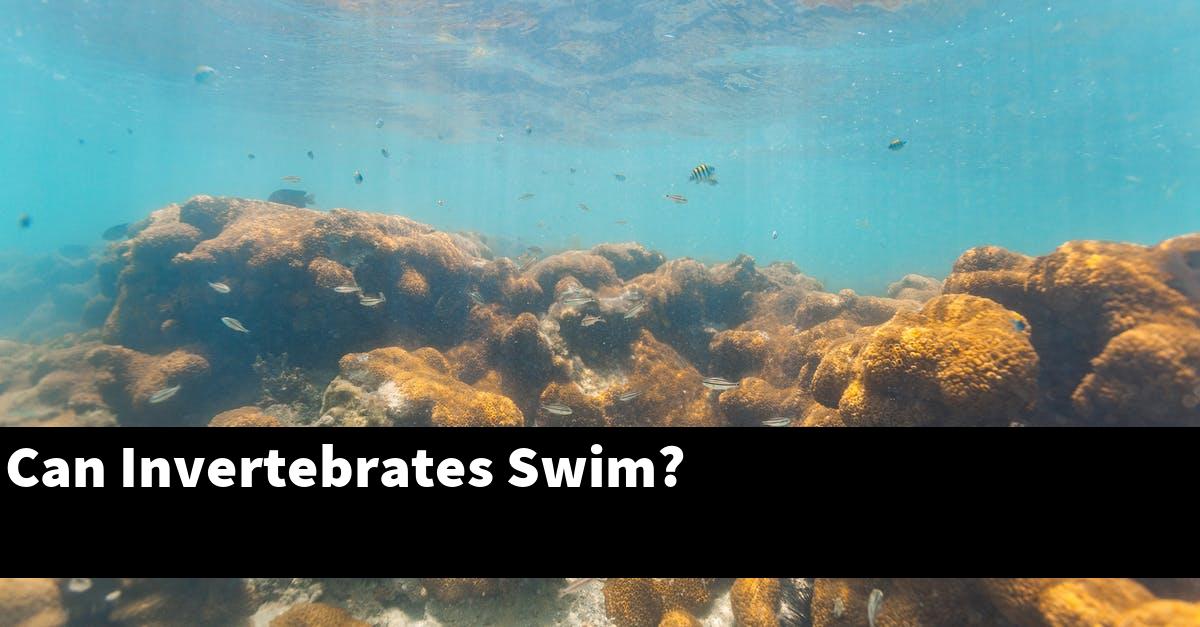Invertebrates are animals that lack a backbone. This group includes all animals except for vertebrates, which have a backbone.
Invertebrates can be found in a variety of habitats, including both terrestrial and aquatic environments. Many invertebrates are able to swim, using a variety of methods.
For example, some invertebrates use their limbs to paddle through the water, while others use their bodies to undulate or jet through the water. Invertebrates that live in the water often have special adaptations that help them to swim, such as streamlined bodies or fins.
What are benthic invertebrates?
Benthic invertebrates are animals that live in or near the bottom of a body of water. This includes creatures like crabs, shrimp, clams, and worms.
What can aquatic invertebrates tell us about the health of rivers?
Aquatic invertebrates are an important group of organisms that can provide valuable information about the health of rivers. Aquatic invertebrates are a sensitive group of organisms that can be impacted by a number of factors, including changes in water quality, changes in temperature, and changes in sediment quality.
Aquatic invertebrates can provide important information about the health of rivers by detecting changes in water quality, detecting changes in sediment quality, and providing information about the abundance and diversity of aquatic invertebrates. Aquatic invertebrates can also provide information about the impact of human activities on rivers.
Why are aquatic invertebrates important?
Aquatic invertebrates are important for several reasons. First, they are a vital part of the food web.
Aquatic invertebrates are an important part of the food chain because they are the first link in the food web. They feed on small organisms, and those small organisms are then eaten by larger animals.
Aquatic invertebrates are also important because they play an important role in the health of aquatic ecosystems. Aquatic invertebrates are responsible for cleaning up the water by eating unwanted organisms.
Are most invertebrates aquatic?
An invertebrate is an animal that does not have a backbone. Invertebrates can be divided into two groups: those that are aquatic and those that are terrestrial.
Aquatic invertebrates include water fleas, water striders, and water mites. Terrestrial invertebrates include spiders, centipedes, and scorpions.
Most invertebrates are aquatic. This is because they require water to survive.
Aquatic invertebrates include water fleas, water striders, and water mites. These invertebrates live in water and feed on waterborne organisms.
Another group of invertebrates, the terrestrial invertebrates, live on land. They include spiders, centipedes, and scorpions.
Terrestrial invertebrates have a hard exoskeleton that helps them survive in dry environments. These invertebrates typically live in warm environments and feed on insects and other small invertebrates.
Are invertebrates found in aquatic ecosystems?
Invertebrates are found in aquatic ecosystems. These ecosystems are found in places where there is water and plants.
Invertebrates help to pollinate the plants and they help to clean up the water.
What is a water invertebrate?
A water invertebrate is an organism that lives in or near water. Different water invertebrates can be found in different parts of the world, and some can be quite rare.
Some common water invertebrates include water fleas, water striders, water boatmen, and water beetles.
What do aquatic invertebrates eat?
Aquatic invertebrates eat a variety of things, including plant material, small animals, and even other invertebrates. They use a variety of methods, including filtering, sifting, and sucking.
Aquatic invertebrates have many different stomachs, which allow them to eat a variety of things.
How do invertebrates move in water?
Invertebrates move in water by using a variety of methods. Some invertebrates, such as jellyfish, use a type of propulsion called pulsing.
Jellyfish pulsate their cells, which creates a flow of water that propels them forward. Other invertebrates, such as water fleas, use a type of swimming called ciliary locomotion.
Ciliary locomotion is the movement of invertebrates through water using their cilia. These cilia are tiny, hair-like structures that help invertebrates move through water.
Can invertebrates live in water?
Yes, invertebrates can live in water. Some invertebrates, such as aquatic insects, can live completely submerged.
Other invertebrates, such as earthworms, can live in soil but can also live in water.
What is an aquatic invertebrate?
An aquatic invertebrate is any type of invertebrate that lives in water. This includes both vertebrates and invertebrates that spend their entire lives in water.
Some of the most common aquatic invertebrates are barnacles, crabs, clams, and urchins.
Conclusion
Yes, invertebrates can swim. Invertebrates are animals that lack a backbone, and many of them are able to move through the water by using their appendages to propel themselves.
Some common examples of invertebrates that can swim include crabs, squid, and jellyfish.

